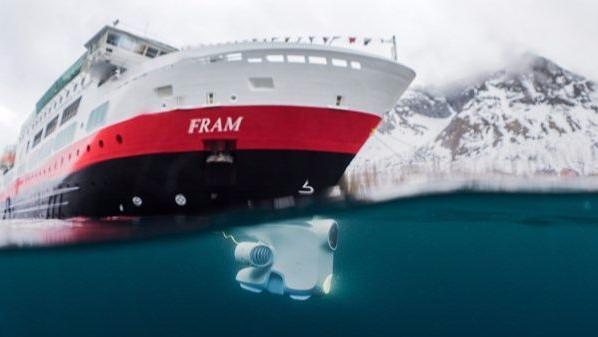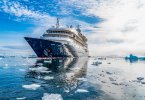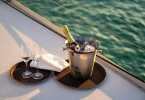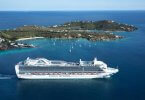MIA TAYLOR OCTOBER 30, 2019

Being the world’s largest expedition cruise company is a position that comes with great responsibility. Hurtigruten has long been aware of this fact and takes its market-leading position very seriously.
Using the UN Sustainable Development Goals as a framework, and with sustainability weaved into every detail of its expeditions, Hurtigruten has established a track record of taking care of the wildlife habitats and remote communities and environments its ships visit.
That effort has included being the first cruise line in the world to remove all unnecessary single-use plastic from its ships and hotels.
It then expanded to include a pioneering effort to power cruise ships with liquefied biogas, a fossil-free, renewable gas produced from dead fish (yes, fish) and other organic waste.
“What others see as a problem, we see as a resource and a solution. By introducing biogas as fuel for cruise ships, Hurtigruten will be the first cruise company to power ships with fossil-free fuel,” Hurtigruten CEO Daniel Skjeldam said when making the announcement in 2018.
Renewable biogas is a clean source of energy, considered the eco-friendliest fuel currently available.
The company’s latest efforts on the sustainability front include the exciting development of a new breed of ships. Hurtigruten has invested in state-of-the-art hybrid-electric engines to power greener expedition vessels.
The first of these pioneering ships, MS Roald Amundsen, was launched this year.

Appropriately named after the first man to cross Antarctica and reach the South Pole, the company hopes that MS Roald Amundsen will lead the way toward an even more sustainable way of traveling around the globe.
Specially constructed for voyages in polar waters, MS Roald Amundsen is designed to serve as a comfortable basecamp at sea – bringing adventurers from all over the world to the most spectacular destinations in the most sustainable way, the company said.
Hybrid propulsion is just one of many notable features on the new ship. MS Roald Amundsen is an ice-class PC6 vessel and includes advanced hull construction purpose-built for polar waters. The front of the hull is designed with a patented wave-piercing bow for smoother sailing.
Beneath the ship, meanwhile, hydrodynamic propellers attached to magnetic motors reduce drag, noise, and vibration, and improve maneuverability.
In addition, all of the hydraulic oils and lubricants used throughout the MS Roald Amundsen are biodegradable and each system is connected to a heat exchange network that efficiently recovers surplus energy.
Hurtigruten’s construction of MS Roald Amundsen, as well as the forthcoming MS Fridtjof Nansen, (currently under construction in Norway) and a third hybrid sister planned for a possible 2021 launch, is part of an ongoing, multi-million investment by the company.
Hurtigruten has set its sights on ultimately building the world’s greenest cruise line, which is no small accomplishment indeed.
“This is just the beginning,” Skjeldam said in 2018. “Hurtigruten is the world’s largest expedition cruise line, and that comes with a responsibility. Sustainability will be a key driver for the new era of shipping and the travel industry. Hurtigruten’s unmatched investments in green technology and innovation set a new standard for the whole industry to follow. Our ultimate goal is to operate our ships completely emission-free.”







